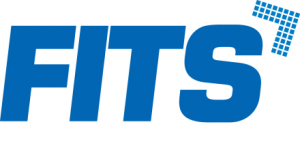
Module 1: FITS Introduction
The FITS processes are a manageable and relevant set of procedures based on many years’ experience of ICT support providers all over the UK that are ready to be implemented in schools.
They are grouped under four main areas:
Reactive processes
- Service desk
Is the single point of contact within the school for all users of ICT and the services provided by technical support - Incident management
To detect, diagnose and resolve ICT incidents as quickly as possible and minimise their adverse impact on normal operation.
Proactive processes
- Problem management
The detection of the underlying causes of incidents and their resolution and prevention. - Security management
This is the process that takes control of all aspects of security on your network. - Operations management
This involves managed and recorded introduction of changes to hardware, software, services or documentation to minimise disruption to ICT operation and maintain accurate configuration information. - Systems administration
Provides day-to-day administrative services in support of the technology in the ICT infrastructure. - Storage management
Defines, tracks and maintains data and data resources in the school's ICT environment. - Directory services management
This area covers setting up and administering the directory services on the school's network. It stores information such as names of users, computers and other equipment etc. as objects with descriptive attributes. - Print and output management
This ensures that all printed and electronic material is produced in the most efficient and cost-effective manner, using the most appropriate hardware and software available. - Performance and monitoring
This area deals with the detection of infrastructure activity and its impact on the components. - Preventative maintenance
In order for your network to work properly, every component of the network must work properly. Preventative maintenance is concerned with anything that can be done to prevent any component of your infrastructure from failing. - Service continuity
The aim of this section is to minimise the impact on ICT service of an environmental disaster and put in place and communicate a plan for recovery. - Capacity planning
The purpose of capacity planning is to ensure that the ICT infrastructure meets the needs of ICT users at all times. It includes identifying capacity issues, establishing trends in usage peaks and troughs and finding points of failure that may have already occurred, ideally before an end-user reports it to the service desk. - Availability management
This area is concerned with keeping ICT services available in accordance with user requirements as detailed in your service level agreement. - Energy conservation
This section focuses on methods that can be employed to help monitor and reduce the amount of energy used by your school's ICT infrastructure.
Change processes
- Change management
The managed and recorded introduction of changes to hardware, software, services or documentation to minimise disruption to ICT operation and maintain accurate configuration information. - Release management
The aim is to plan, test and manage the successful implementation of software and hardware. To define release policy and to ensure that master copies of all software are secured centrally. - Patch management
This aims to keep the components installed on the network (hardware, software and services) up to date with the latest patches and updates. - Configuration management
Implementing and maintaining up-to-date records of ICT hardware, software, services and documentation, and showing the relationships between them.
Strategic processes
- Service level management
The process of defining, agreeing and documenting the service levels that are acceptable and achievable and monitoring actual performance against these levels. - Financial management
Here the aim is to ensure that the ICT and technical resources are implemented and managed in a cost effective way. The process ensures that the ICT infrastructure costs are justifiable and meet the needs of ICT users at all times.
Members Only Content - Please LOGIN OR purchase below
FITS Member
This content is for members only. Please purchase below to get instant access.
Special Limited Time Offer
Get full member access for only £4.95/m
We are currently offering full access to the members area for a very special rate.
Already a member? - Login Here
Some content on this website is provided under the provisions of the Open Government License.
All other content including, but not restricted to, website design, images logos, etc.
Copyright © 2020 - FITSEd. All Rights Reserved